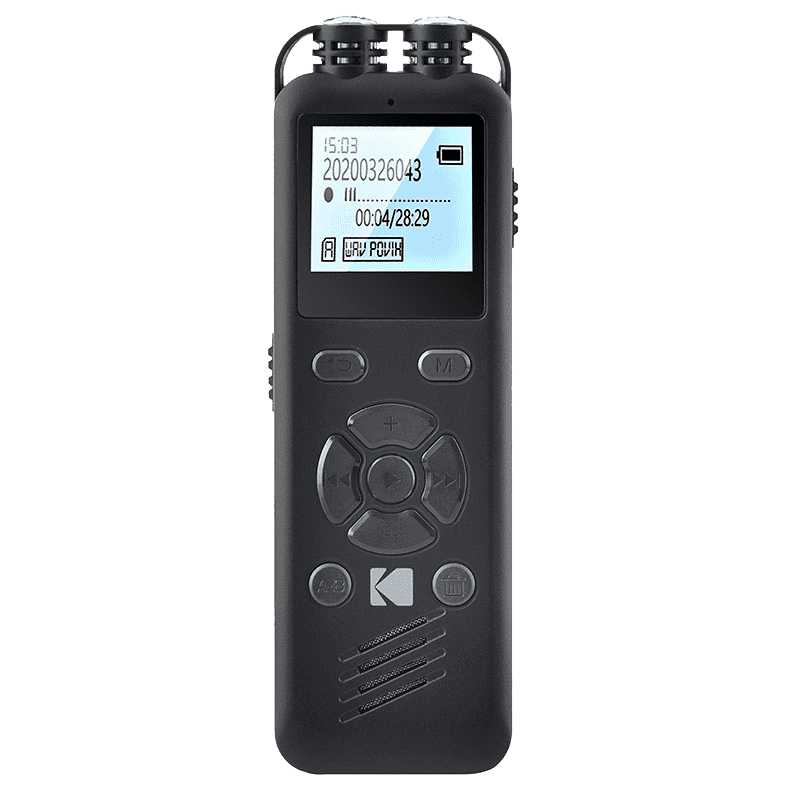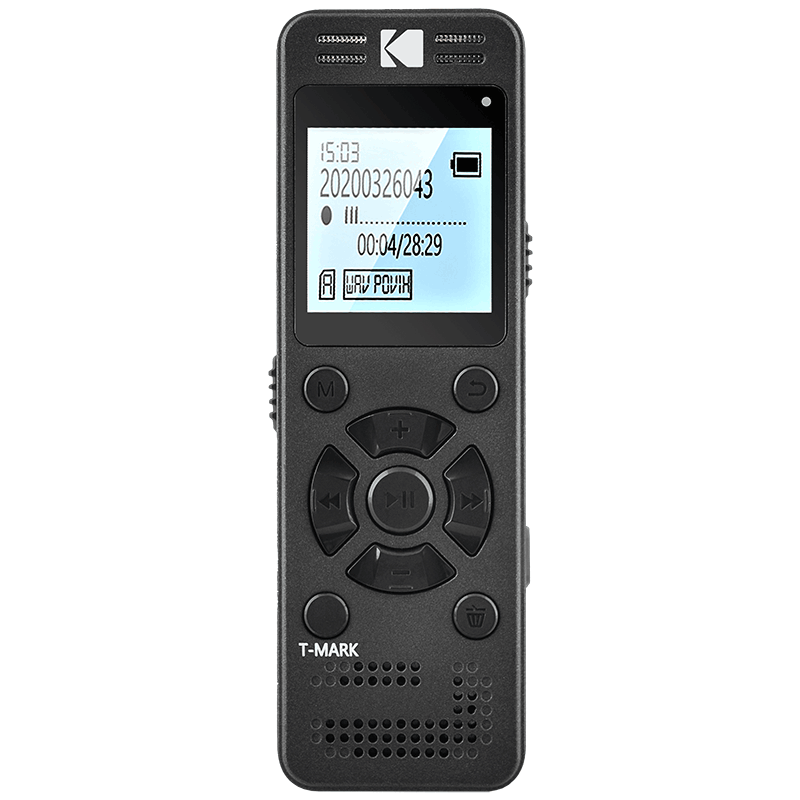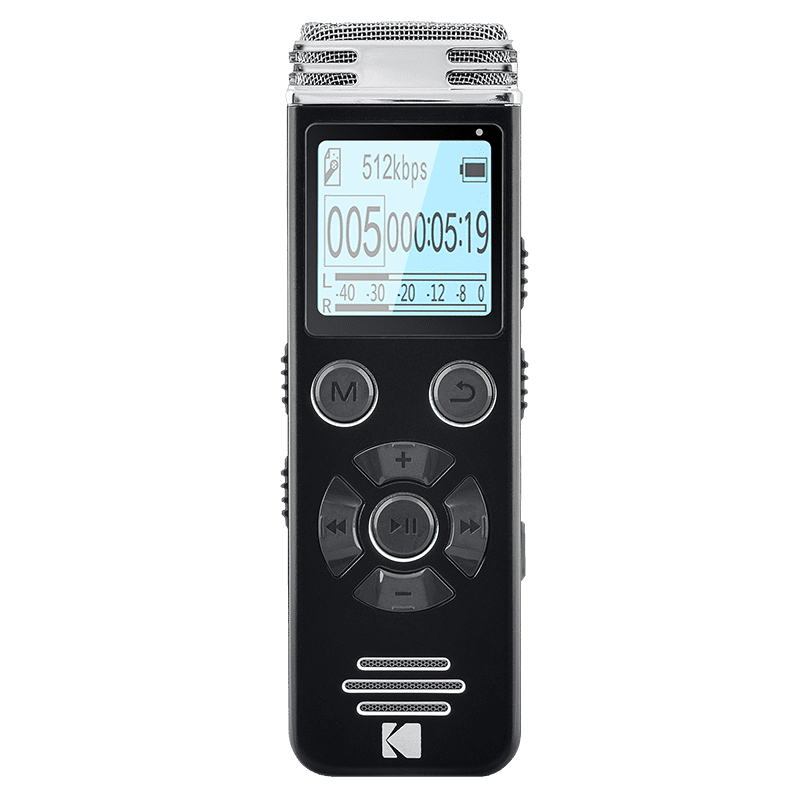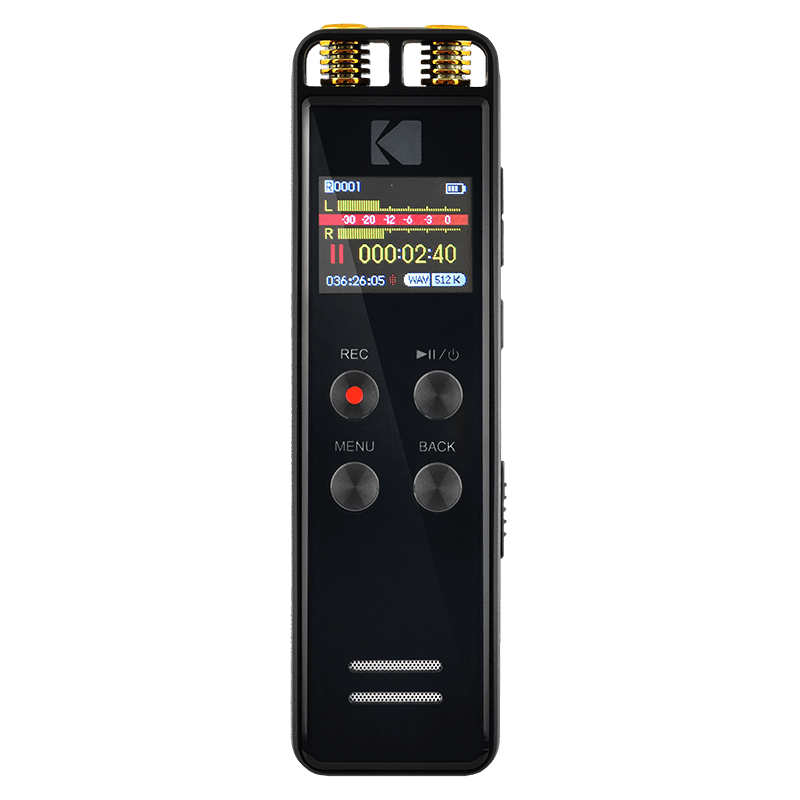
Which Dictaphone should you choose?
Dictaphones are lightweight, compact tech gems specifically designed to record sounds. All their settings are geared towards optimising the quality of your recording. Here's Kodak's guide to choosing a dictaphone, a run-down of this device's features and a look at the wide range of models in our catalogue.
A little history lesson: life before the dictaphone
Human beings have always been surrounded by sound: the sounds of nature, music, voices and so on. Our desire to record these sounds probably goes back as far as our desire to take snapshots of the world around us. So no surprise that a few decades after the invention of photography, the first sound-recording device was born. It was called the phonograph and it recorded and played back the sounds it captured. It was soon used to broadcast music and news, as well as being used as a language-learning tool.
The oldest known intelligible voice recording was produced in 1860 and lasted just 12 seconds. Édouard-Léon Scott de Martinville recorded himself singing the French song "Au clair de la lune". Over subsequent decades, recording devices evolved into the dictaphone, a small, portable object that arrived with the advent of digital technology.
Nowadays, we all have one on us, as our smartphones have an integrated recording device. It's in the form of an app that records sounds and stores them in our phone's memory. But this doesn't mean the end of dictaphones. This lightweight, portable device is still a must-have for professionals and non-professionals alike.
If you want a recording wizard, then reach for a dictaphone!
The dictaphone is now the only device entirely geared to voice recording. It can also be used to replay recorded sounds and transfer them to different storage media or a computer. Despite the advent of new technologies, the dictaphone stands out thanks to its superb recording quality. All of its settings are designed for sound recording, guaranteeing an accurate rendition.
Professionals can dictate reports or record interviews, so they can listen to and write them up later on. Transcription is a profession in its own right, and the dictaphone is indispensable tool. Creative types will also benefit from such a device; you can ditch cumbersome notebooks and pens and record voice notes whenever and wherever you like.
Journalists, teachers, doctors, lawyers, students, writers... Tons of people rely on their dictaphone. Plus, as well as being practical, they're lightweight and easy to carry around. You can keep a word-for-word record of a meeting or brainstorming session, vital information from a conference, or share your observations in a research context. And today's digital dictaphones produce incomparable quality combined with intuitive features.
What are a dictaphone's main features?
Think a dictaphone's a waste of time and money because you've got a voice recording app on your smartphone? Smartphone apps don't have all the features and qualities of a voice recorder. So, here's a non-exhaustive list of what makes a dictaphone a worthy addition to your tech:
● Dictaphones are lighweight and easy to handle. So you can take one anywhere. They're discreet and above all professional, unlike a smartphone which may give the impression you're not fully-focused on the task in hand. Dictaphones also have hands-free settings such as an instant recording button or voice control.
● A dictaphone's main function is to provide top-quality recordings that reproduce sounds perfectly. Noise reduction and the recording scene selection means you can record in various environments, whether it's a loud, crowded place, outdoors in windy conditions, or if you need to record a number of voices. You'll get way more options that you would with a smartphone.
● A dictaphone's storage capacity is entirely dedicated to recordings! So you won't have to worry about using up your smartphone's memory or running out of space if you need to record a very long session. These clever devices can store over 700 hours of audio! Depending on the device, you can also increase its memory by adding an SD card.
● In addition to storage, the dictaphone's battery is also only used for recordings. You won't have to watch your smartphone's battery quickly drain while you record voice notes. A dictaphone can be used continuously and will have a battery life of at least 20 hours!
● When choosing a dictaphone, you can opt for one with an omnidirectional channel. This feature is essential for perfect 360° voice recordings. In other words, you don't have to point the microphone at the person you're talking to, or remain frozen to the spot while you record. You'll have a versatile and discreet device as well as top audio quality.
● Finally, you can choose between a mono and stereo device. A mono device captures sounds via a single channel, while an audio version has two. Stereo has a greater capacity and is ideal for recording multiple voices and atmospheric sounds. Mono devices are more suited to fairly quiet environments and the dictaphone needs to be close to the sound.












